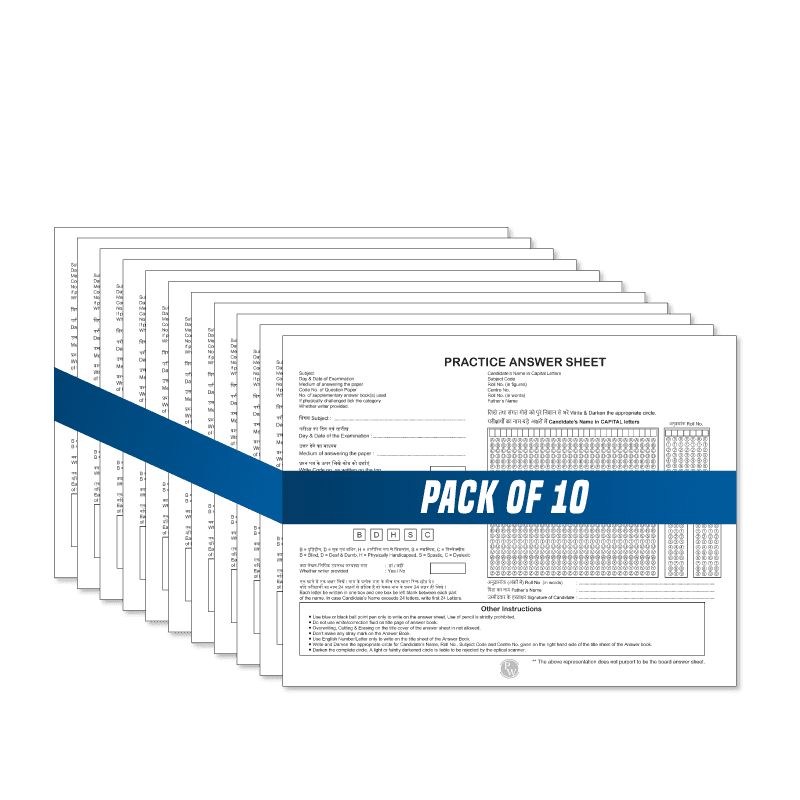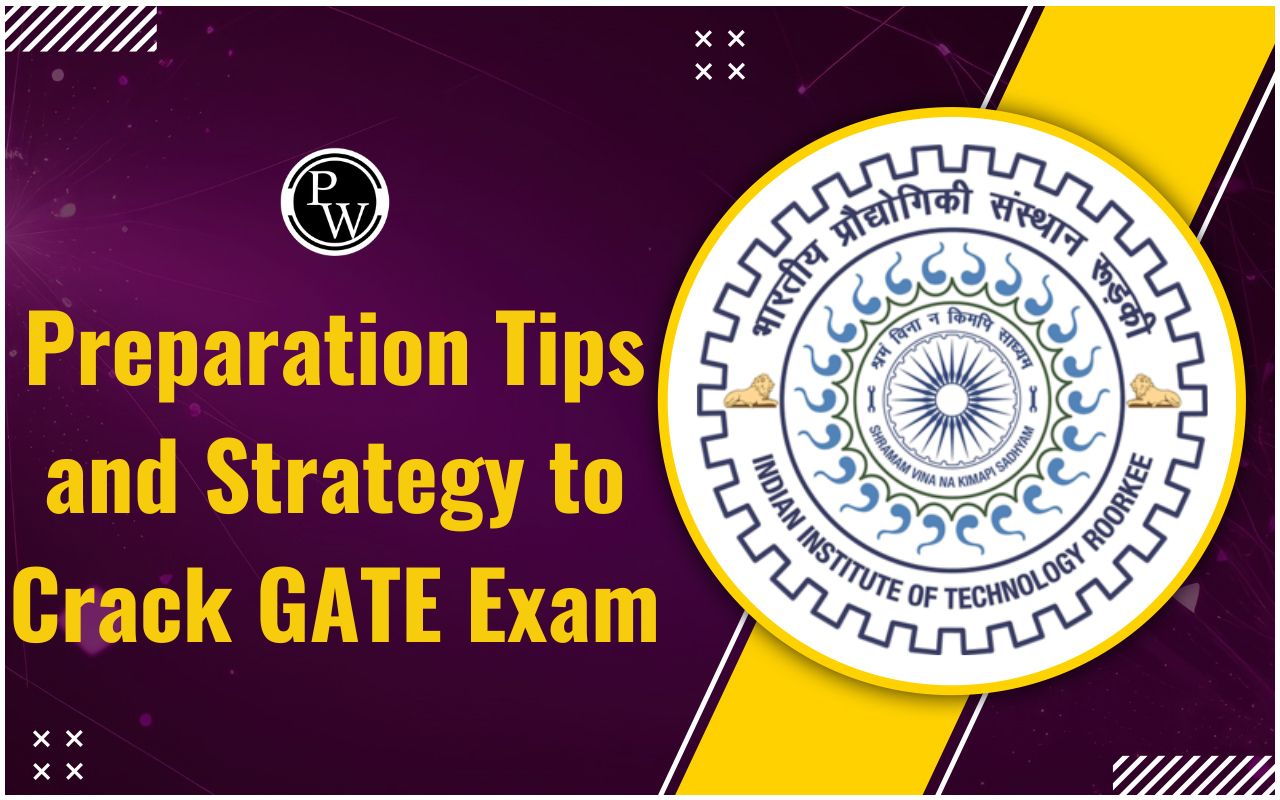CBSE Board Answer Sheet: Do's and Don'ts for Board Success

Board exams can feel stressful, especially when students are not sure how to write their answers properly in the answer sheet for the upcoming board exams. Small mistakes like untidy handwriting, missing details on the front page, or poorly arranged answers can reduce marks, even when the answers are correct. Many students lose marks not because they lack knowledge, but because they do not present their answers in the right way. That is why understanding the do’s and don’ts of the CBSE board answer sheet is very important for the upcoming board exams.
Your CBSE answer sheet is the main tool examiners use to check your performance. A neat, well-organized answer sheet shows confidence and good preparation. Writing answers in a clear order, underlining key points, and leaving proper space between answers makes it easier for examiners to check. Referring to a CBSE model answer sheet helps students learn proper answer format, headings, and space management. With regular practice, you can make your answer sheet examiner-friendly and score better marks in the upcoming board exams.
Do's and Don'ts for Board Success
So check out here the Do’s and Don’ts for your upcoming board exam success.
Do's for Success with Your CBSE Answer Sheet
-
Fill the Front Page Carefully
The CBSE answer sheet front page contains essential details like your roll number, subject code, and other identification information. Make sure everything is filled out neatly and accurately. Double-check your entries to avoid errors that could confuse you. -
Use Clear Headings
Structuring your answers is vital. Use headings and subheadings to break your content into clear sections. For example, when writing long answers, divide them into bullet points or numbered lists, and underline important words to highlight key ideas. -
Write Neatly
Handwriting plays a crucial role in how examiners perceive your answers. Good handwriting ensures readability and demonstrates effort. Use uniform spacing between lines and paragraphs for a clean look. -
Follow the Question Order
While you don’t have to answer questions in the exact order, make sure to clearly label each answer with the correct question number. This helps the examiner follow your answers and prevents them from missing any. -
Draw Margins
Margins are more than just a formality. They create space for rough work and allow you to add extra points later. Always draw margins on both sides of the page before starting your exam. -
Use Diagram:
If possible try to use diagrams and tables for long-form answers. It will enhance your marking chances.
-
Check Your Answers Before Submitting
Spend a minute or two planning your response for long or complex questions. Jot down key points in the margin to organize your thoughts before you start writing. -
Use Simple Language
Avoid overly complicated words or phrases. Simple, clear language ensures that your answers are easy to understand and align with the expected level.
Read More: Topper Answer Sheet Class 10 CBSE PDF Download
Don'ts for Success with Your CBSE Answer Sheet
-
Don’t Overwrite
If you make a mistake, draw a single line through it instead of overwriting it. Overwriting makes your answers look messy and not readable. -
Don’t Use Colored Pens
Write only with blue or black pens. Colored pens, highlighters, or pencils are not allowed unless specifically instructed. The class 10 CBSE board answer sheet guidelines are strict about this. -
Don’t Leave Pages Empty
If you don’t use a page, draw a big line across it to show it's blank on purpose. -
Avoid Scribbling
Be careful when crossing out words. Scribbling makes your answer sheet look untidy. -
Don’t Spend Too Much Time on One Question
Manage your time well. Spending too long on one question might leave others incomplete. -
Don’t Do Rough Work Everywhere
Only use the margins or a rough work area for calculations or extra notes. Keep your answers neat, don't use rough, especially on the CBSE answer sheet front page. You can ask the invigilator about additional rough paper and attach it to the answer sheet. -
Avoid Lengthy Answers for Short Questions:
Keep your answers concise and relevant to the marks allocated; avoid unnecessary elaboration that could confuse the examiner.
Final Checklist Before Submission
Make sure that you remember this checklist and Check once you have completed the answer sheet of CBSE board exam:
-
All identification details are correctly filled
-
Question numbers are properly marked
-
All required questions are answered
-
Attachments (if any) are properly secured
-
Pages are numbered correctly
-
Rough work is properly marked
Check out: PW Answer Sheets
Tips for Class 10 and Class 12 Students
-
Practice with CBSE Model Answer Sheets
Get a feel for the exam format by using a CBSE model answer sheet during your practice sessions. This helps you familiarize yourself with the layout and guidelines, reducing mistakes in the actual exam. -
Practise Mock test and Sample papers:
CBSE Class 10 Real Feel Sample Papers 2025 includes subjects like Science, Maths (Standard), Social Science, and English. These sample papers contain 50% competency-based questions and follow the format of CBSE exam papers. Practicing these papers will help you gain real exam experience. Use them to manage your time and get comfortable with the board exam.
-
Understand How examiners Check
Examiners prefer answers that are structured and easy to read. Study samples of the CBSE board answer sheet to understand how top scorers present their answers. -
Stay Calm and Confident
Nervousness can lead to mistakes. Stay calm and focused to ensure you give your good performance. Deep breathing exercises can help you manage stress before and during the exam. -
Work on Speed and Accuracy
Practice solving previous years' question papers to improve your speed and accuracy. This also helps you identify your strengths and weaknesses. -
Revise Regularly
Regular revision ensures that you retain information and feel confident about the syllabus. Use sample papers and guides to test your preparation. -
Ask for Guidance
Don’t hesitate to ask teachers or peers for help if you’re unsure about something. Clarifying doubts early can save you from last-minute confusion. -
Take Care of Your Health
A healthy body supports a sharp mind. Eat nutritious meals, stay hydrated, and get enough sleep to ensure you’re in the good condition to write your exam.
Knowing how to use your CBSE Board Answer Sheet the right way can help you score higher. Follow these do’s and don’ts to make sure your answers are neat and well-organized. Practice with CBSE model answer sheets so you feel confident and ready to succeed in your exams.
Also check, PW Stationery
CBSE Board Answer Sheet FAQs
1. How many lines should I leave between two answers?
Leave 2-3 lines between consecutive answers. This improves readability and helps examiners distinguish between different answers clearly.
2. How should I correct mistakes on my answer sheet?
Draw a single neat line through the mistake and write the correct answer next to it. Never use whitener or scribble over mistakes. For major corrections, strike through the entire section with a single line and rewrite the answer.
3. Is it necessary to write answers in the exact order of questions?
No, you can answer questions in any order, but ensure you clearly mark the correct question number for each answer. It's recommended to attempt questions you're most confident about first.
4. How should I mark sections in the answer sheet?
Clearly write section numbers (A, B, C) and question numbers. Leave a line space between different sections and questions for better readability.










